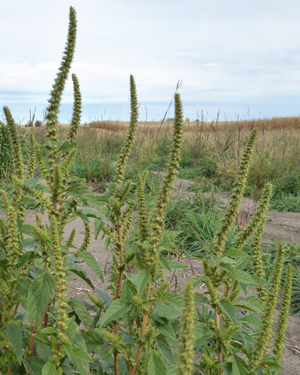Invasive weeds make yet another first appearance in southeast Minnesota. The Minnesota Department of Agriculture (MDA) has positively identified the invasive weed Palmer amaranth in Winona County.

The MDA was contacted by crop consultants after they discovered several suspect plants in a soybean field. MDA staff scouted the area and removed 20 Palmer amaranth plants, which were then confirmed as Palmer by genetic testing. The field has since been treated with a herbicide application, and follow-up scouting by the MDA did not find any new invasive weeds. The site will be monitored for three years for any new Palmer amaranth.
The MDA is trying to determine the source of the invasive weed.
Now is the time when Palmer amaranth becomes visible in agricultural fields. The MDA is asking farmers, crop consultants, and agronomists to report any suspicious plants to the Minnesota Department of Agriculture’s Arrest the Pest line at 1-888-545-6684 or arrest.the.pest@state.mn.us.
Since it was first discovered in the state in 2016, Palmer amaranth has been found in nine Minnesota counties, including Winona County. Details of previous finds can be found on the MDA website.
Palmer amaranth is listed as a noxious weed in Minnesota. All above and below ground parts of the plant must be destroyed, and it cannot be moved. The weed is also listed as a prohibited weed seed in the state. This means no Palmer amaranth is allowed in any seed offered for sale in Minnesota.
Left uncontrolled, a single female Palmer amaranth plant typically produces 100,000-500,000 seeds. It is resistant to multiple herbicides, can cause substantial yield losses, and greatly increase weed management costs in soybeans and corn.


